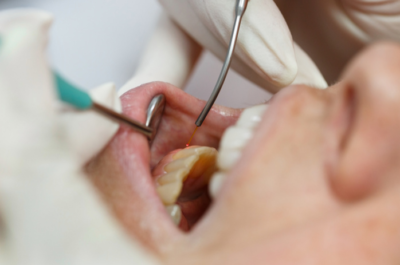 If Dr. Lamparski has discussed the need for a frenectomy for either yourself or a family member, such as child, you may be curious about all that it entails. This relatively common procedure is performed for several reasons and can provide real benefits for those who receive it.
If Dr. Lamparski has discussed the need for a frenectomy for either yourself or a family member, such as child, you may be curious about all that it entails. This relatively common procedure is performed for several reasons and can provide real benefits for those who receive it.
Below is more information about a frenulum, which is the affected body part in a frenectomy, and what you should know about the surgical procedure itself.
What Is a Frenulum?
A frenulum is a fleshy connector between two adjoining tissues. The purpose of the frenulum is to provide support, but an abnormally large frenulum can interfere with normal functioning or development. Frenula (plural) can be found all over the human body, including inside the mouth.
Three types of oral frenula are of primary concern to orthodontists and their patients: the upper labial frenulum, lower labial frenulum and the lingual frenulum. If any of these frenula fail to develop in a normal manner, this can result in developmental, tooth, gum and even speech problems for affected individuals.
Problems with the Labial Frenulum
The upper labial frenulum connects the gums of the upper teeth with the middle part of the inside upper lip. In most individuals, the upper labial frenulum will gradually decrease in size as the mouth enlarges, providing growing room for the new adult teeth that emerge.
However, if it fails to recede, it may create a gap between the two middle teeth. In addition, a large labial frenulum may pull on the gums of the upper teeth and eventually cause gum disease as a result.
The lower labial frenulum, which is the connecting tissue between the inside lower lip and gums of the bottom teeth, can also affect the health of individuals should it be too tight. In particular, an overly tight lower labial frenulum can prevent an infant from properly breastfeeding and can contribute to tooth decay by creating pockets that capture milk.
Problems with the Lingual Frenulum
The other major frenum in the mouth is the lingual frenulum, which supports the base of the tongue. For some people, the lingual frenulum is too tight and can cause those affected to become “tongue-tied.” Someone who is “tongue-tied” is likely to experience significant speech problems and may even be unable to eat properly.
The Frenectomy Solution
Fortunately, a frenectomy is a simple solution for individuals who have unusually large or tight frenula. A frenectomy is typically performed under local anesthesia and only takes a few minutes to complete. Dr Lamparski is able to perform frenectomy procedures using laser technology, greatly reducing the chance of post-surgical complications. The laser produces much less bleeding, as it cauterizes and seals the wound almost immediately. In addition, healing times are reduced after laser surgery and a patient is less likely to experience pain during recovery.
Post-op recovery is usually fast and uncomplicated, regardless of whether conventional or laser surgery is used to perform the frenectomy. Patients should be careful not to eat foods that might irritate the incision and should also avoid hot food and drink.
The use of warm saltwater rinses can help speed up healing and soothe most discomfort, but an appropriate over-the-counter pain reliever can be used if needed. Finally, patients should adhere to all post-operative instructions provided byLamparski Orthodontics.
Whether your child is in need of interventive frenectomy for tongue-tie, or you’re experiencing complications of speech patterns from an overly large frenulum, Dr. Lamparski has the technology to quickly and safely perform the procedure with minimal disruption to your daily schedule. Contact Lamparski Orthodontics for more information at 724-224-8288


